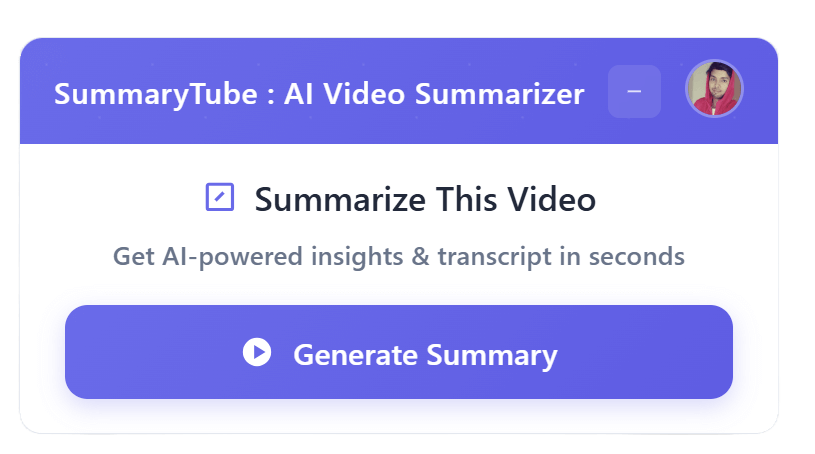Switching from iPhone to Android
By Marques Brownlee
Published Loading...
N/A views
N/A likes
AI Summary of "Switching from iPhone to Android"
Get instant insights and key takeaways from this YouTube video by Marques Brownlee.
The Concept of Switching Costs
💡 Understand that high perceived switching costs can prevent customers from changing products or services, even if it's financially beneficial.
📉 A survey found 65% of people are unwilling to switch phone carriers for a better deal, indicating the significant impact of perceived hassle and effort.
Google's Strategy to Minimize Switching Barriers
📱 Google directly addresses competitor lock-in by replicating key features, such as an AI-assisted journaling app, to offer an equivalent experience to users.
🧲 The introduction of Pixel Snap (G2 wireless chargers and magnets) on Pixel 10 phones mirrors Apple's MagSafe, removing a major reason for users to resist switching.
💬 Google is tackling the iMessage lock-in (blue bubble pressure) by promoting RCS interoperability, making it easier for users to switch without losing messaging features.
Market Competition & User Acquisition
🌍 The smartphone market has shifted from acquiring new customers to primarily targeting switchers and first-time smartphone users, as most of the world already owns a device.
🔄 Competitors actively work to both entice users to switch to them (e.g., Apple's Move to iOS app, Google's replicated features) and make it harder to switch away.
Key Points & Insights
🔑 Companies often copy competitor features not just for innovation, but as a strategic move to minimize perceived switching costs and broaden their potential user base.
💡 Interoperability initiatives, like Google's push for RCS, are crucial for reducing platform lock-in and fostering a more competitive market.
🎯 When developing products, consider potential barriers to adoption for users coming from competing ecosystems and strategically address them to attract switchers.
📸 Video summarized with SummaryTube.com on Aug 31, 2025, 18:28 UTC
Related Products
Find relevant products on Amazon related to this video
As an Amazon Associate, we earn from qualifying purchases
📜Transcript
Loading transcript...
📄Video Description
TranslateUpgrade
That terrible Google event and the battle of switching cost...
Blue Bubbles vs Green Bubbles: https://youtu.be/BuaKzm7Kq9Q
MKBHD Merch: http://shop.MKBHD.com
Playlist of MKBHD Intro music: https://goo.gl/B3AWV5
~
http://twitter.com/MKBHD
http://instagram.com/MKBHD
http://facebook.com/MKBHD
Full video URL: youtube.com/watch?v=eCR17sBh-Qw
Duration: 9:00
Recently Summarized Videos
💎Related Tags
switching costswitching from iphoneswitching to iphoneMKBHDswitching from android
Total Video Summary Page Visits :2
AI Summary of "Switching from iPhone to Android"
Get instant insights and key takeaways from this YouTube video by Marques Brownlee.
The Concept of Switching Costs
💡 Understand that high perceived switching costs can prevent customers from changing products or services, even if it's financially beneficial.
📉 A survey found 65% of people are unwilling to switch phone carriers for a better deal, indicating the significant impact of perceived hassle and effort.
Google's Strategy to Minimize Switching Barriers
📱 Google directly addresses competitor lock-in by replicating key features, such as an AI-assisted journaling app, to offer an equivalent experience to users.
🧲 The introduction of Pixel Snap (G2 wireless chargers and magnets) on Pixel 10 phones mirrors Apple's MagSafe, removing a major reason for users to resist switching.
💬 Google is tackling the iMessage lock-in (blue bubble pressure) by promoting RCS interoperability, making it easier for users to switch without losing messaging features.
Market Competition & User Acquisition
🌍 The smartphone market has shifted from acquiring new customers to primarily targeting switchers and first-time smartphone users, as most of the world already owns a device.
🔄 Competitors actively work to both entice users to switch to them (e.g., Apple's Move to iOS app, Google's replicated features) and make it harder to switch away.
Key Points & Insights
🔑 Companies often copy competitor features not just for innovation, but as a strategic move to minimize perceived switching costs and broaden their potential user base.
💡 Interoperability initiatives, like Google's push for RCS, are crucial for reducing platform lock-in and fostering a more competitive market.
🎯 When developing products, consider potential barriers to adoption for users coming from competing ecosystems and strategically address them to attract switchers.
📸 Video summarized with SummaryTube.com on Aug 31, 2025, 18:28 UTC
Related Products
Find relevant products on Amazon related to this video
As an Amazon Associate, we earn from qualifying purchases
Loading Similar Videos...
Recently Summarized Videos

Get the Chrome Extension
Summarize youtube video with AI directly from any YouTube video page. Save Time.
Install our free Chrome extension. Get expert level summaries with one click.